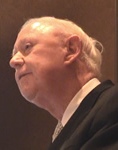Year: 2009
We calculate the values for the High-Frequency Gravitational Wave (HFGW) radiation pattern for a multipleelement HFGW generator in the ?far field,? that is the field many wavelengths away from the generator. We extend Baker, Davis and Woods (2005) for a single GW-emission pair to include an in-phase, linear array of N such pairs as discussed in Baker, Stephenson and Li (2008). We calculate new values for the variable K in Baker, Davis and Woods (2005) by decreasing the integration interval of ? from 10? to 1?. This provides us with a K value of increased accuracy. The improved K has a value of 7.6x10-7 deg-2 and is used to find the power intensity, I(?), of a single GW source in terms of watts per square degree over the radiation-pattern cap The ? half-power-point angle for a single GW-emission pair at their mid-way-point focus is also recalculated and found to be 47.5?. We utilize the result of Romero and Dehnen (1981) and Dehnen and Romero (2003) for an increase in HFGW flux (in a linear array of N in-phase radiation elements) proportional to N2. This result is employed to compute the half-power-point angle, idealized radiation cap area and the HFGW flux/power-of-a-single-radiation-element at a distance of several wave lengths away, for example one meter from the end of a linear and a double-helical array in Wm-2 as a function of N. The notional picture shown of an idealized needle-like radiation beam is in the far field. It is described at a distance far enough from the generator that it is beyond the conventional diffraction limit of a beam's radiation-pattern cap area. It is found that the HFGW flux calculated is small, but that the Li-Baker detector may be capable of sensing the HFGWs generated in a laboratory setting.


